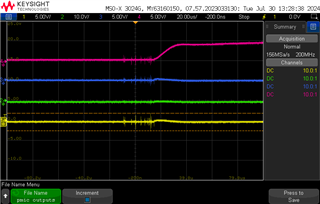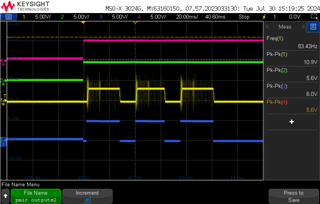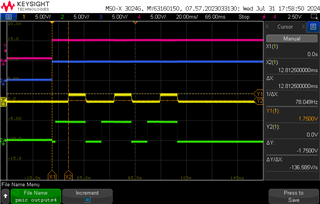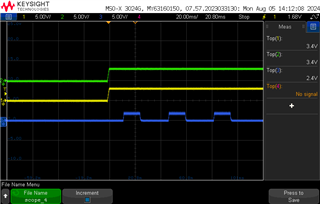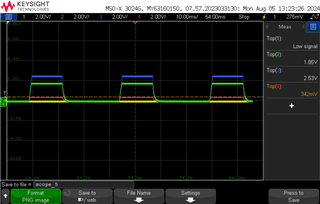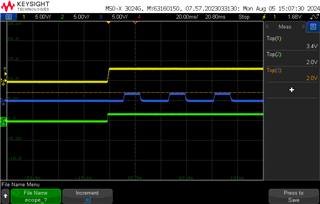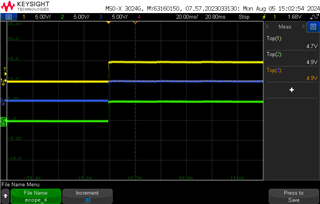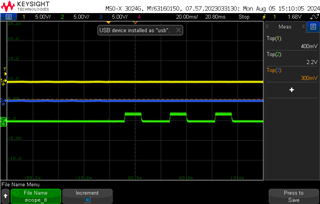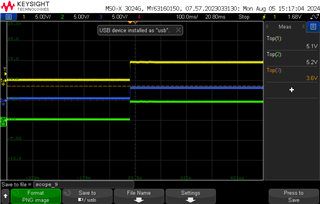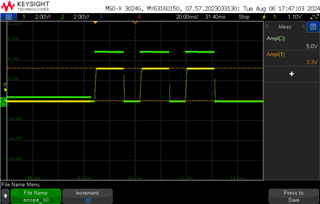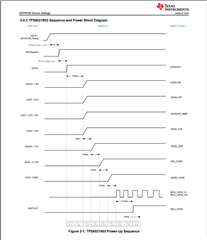Other Parts Discussed in Thread: TLV62595, ,
Tool/software:
Hello, I recently designed the AM6254 based processor board with the TPS6521903RHBR PMIC, when I Power on the board the 3.3V buck convertor turns on for few ms then remains off after that. sharing. it looks like PMIC GPO2 pin pulls down the LDO enable PIN.
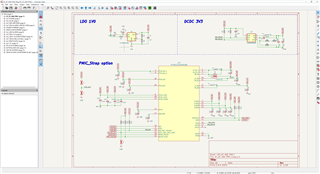
I have also replaced the PMIC from the market purchased board and swap it with the Newly designed board. The market board works well and getting all the outputs from the PMIC but not getting from Newly designed board.
The 3.3V Buck convertor is TLV62595DMQR. (DCDC_3V3)
Thanks and Regards
Mohit


